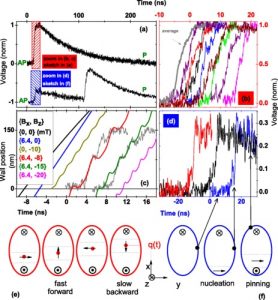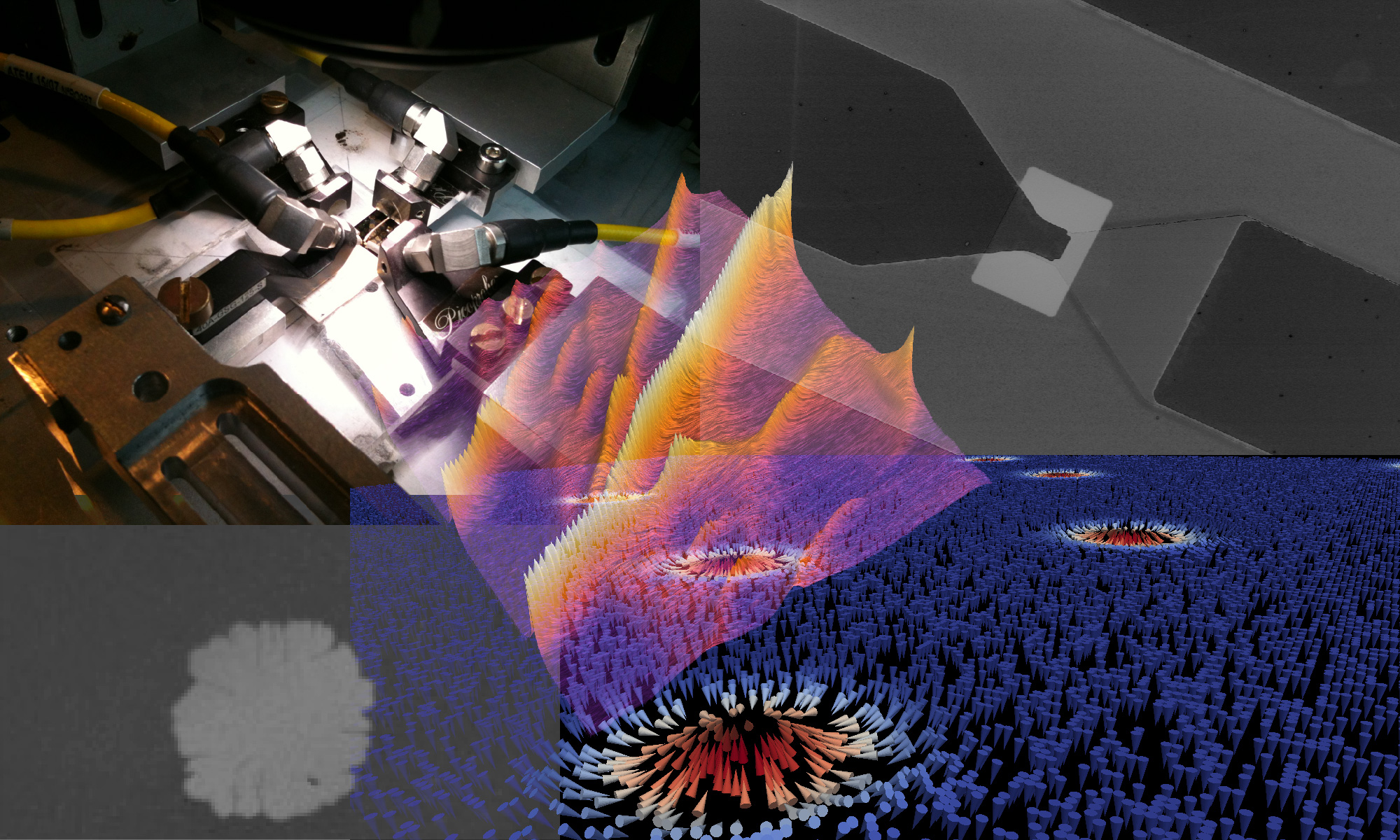Magnetic random access memory (MRAM) promises to provide a more energy-efficient solution for memory applications thanks to the intrinsic non-volatility of magnetic states. However, for MRAM to be a viable solution for future computers, a number of important issues remain to be tackled on the device level.
One aspect is the ultimate switching speed, i.e., how fast can a magnetic bit be switched between a ‘0’ and a ‘1’? To address this, the NOMADE group has used single-shot time-resolved electrical measurements on magnetic tunnel junctions to study typical switching processes. A key result is that while the process of magnetization reversal itself can be fast (either through coherent rotation or domain wall nucleation and propagation), there can be significant variations in the “incubation time” before the reversal is initiated.

The group has also shown how the spin wave spectrum can be a useful thermometer for the magnetic tunnel junction, which is important for designing the operating point of MRAM devices.
Further reading:
- T. Devolder, J. Hayakawa, K. Ito, H. Takahashi, S. Ikeda, P. Crozat, N. Zerounian, J.-V. Kim, C. Chappert, and H. Ohno, Phys. Rev. Lett. 100, 057206 (2008).
- A. Le Goff, V. Nikitin, and T. Devolder, J. Appl. Phys. 120, 023902 (2016).
- T. Devolder, A. Le Goff & V. Nikitin, Phys. Rev. B 93 , 224432 (2016).
- T. Devolder, J.-V. Kim, F. Garcia-Sanchez, J. Swerts, W. Kim, S. Couet, G. Kar, and A. Furnemont, Phys. Rev. B 93, 024420 (2016).
